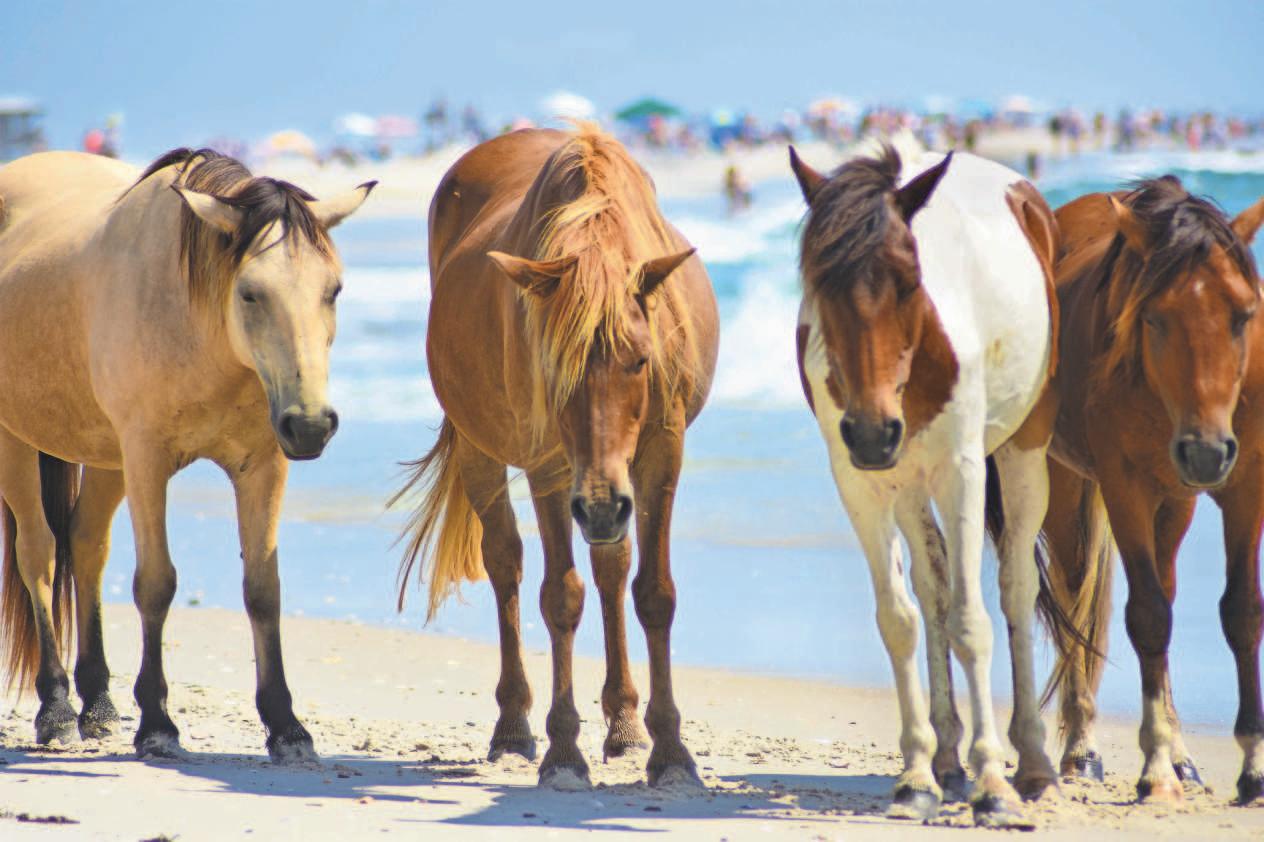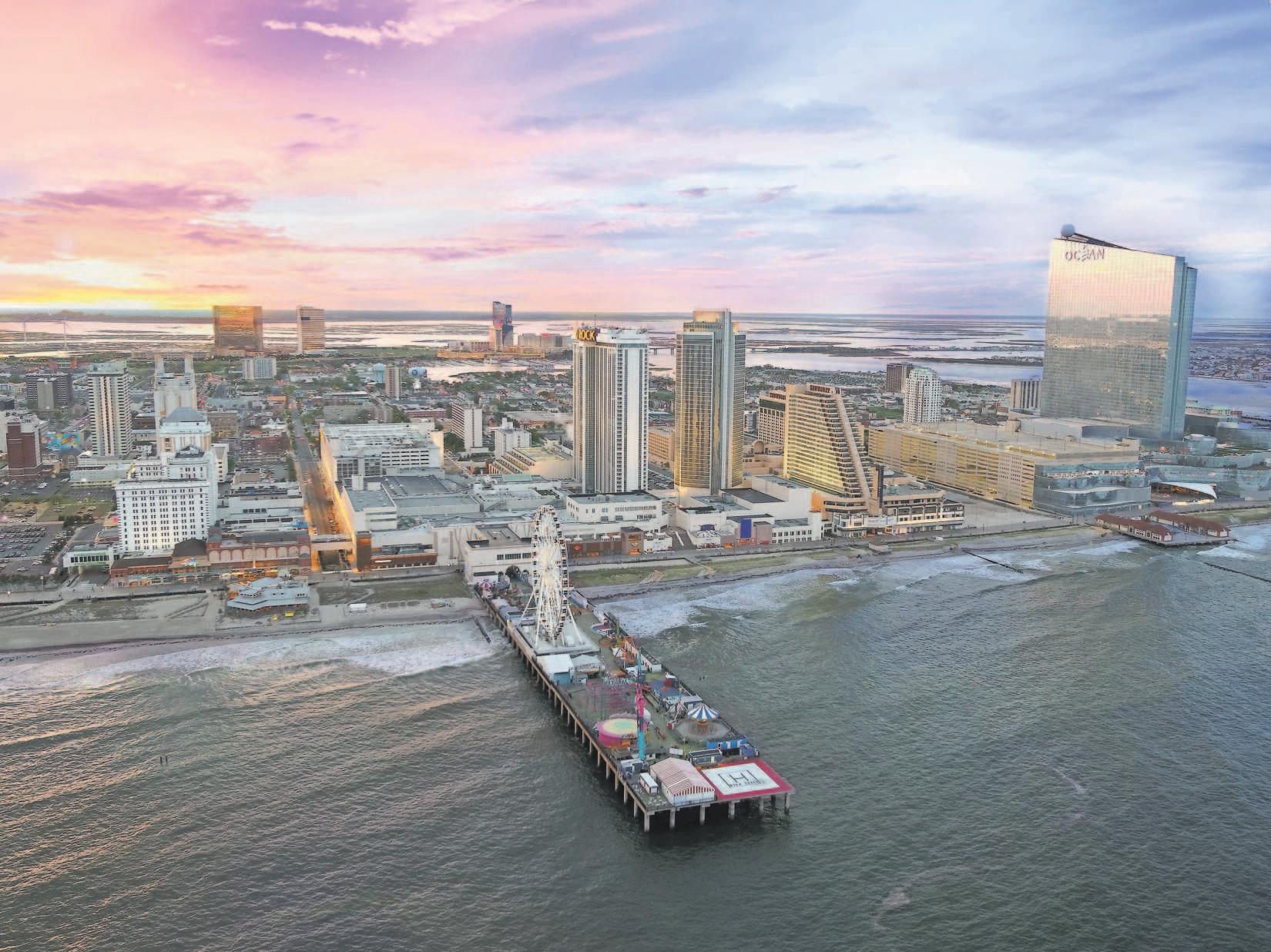
4 minute read
VIRGINIA
VIRGINIA | EASTERN SHORE
USA TODAY SPECIAL EDITION
Advertisement
The Hidden Shore
Remote stretches of sandy beach are just part of region’s allure
By Ken Perrotte
LISTING NOTABLE MIDATLANTIC BEACHES is often a roundup of the usual suspects: Virginia Beach; Ocean City, Md.; Rehoboth
Beach, Del.; and any of a dozen spots on the Jersey Shore.
Then there is Virginia’s Eastern
Shore . At the southern tip of the
Delmarva Peninsula , it’s a place somewhat off the beaten path even in 2020, with landscapes seemingly lost — or at least lagging — in time.
Here is a look at three such destinations:
Assateague Island
GETTY IMAGES
ASSATEAGUE ISLAND
Assateague Island stretches 37 miles along the coasts of Maryland and Virginia. The Virginia district is managed by the U.S. Fish & Wildlife Service as Chincoteague National Wildlife Refuge . Beachgoers can marvel at sunrises over the Atlantic Ocean while sometimes glimpsing Assateague’s wild horses, made famous in the children’s book, Misty of Chincoteague .
Exiting the main highway, drivers pass NASA’s Wallops Flight Facility and cruise through the historic island town of Chincoteague and past the iconic Assateague
USA TODAY SPECIAL EDITION

VIRGINIA | EASTERN SHORE
Assateague Island

GETTY IMAGES
Cape Charles

EASTERN SHORE OF VIRGINIA TOURISM COMMISSION
Kiptopeke State Park
VIRGINIA STATE PARKS Lighthouse before reaching the Toms Cove Visitor Center . There, a sandy beach road extends a half-mile along the waterfront. Driving a four-wheeldrive vehicle along the beach is allowed after receiving an Over Sand Vehicle permit. Horseback riding is also allowed on the same stretch.
Shell collectors may keep one gallon or less of unoccupied shells. Birdwatching is spectacular and visitors sometimes spot secretive, small sika deer. Kayaking is also popular. The closest rental locations are in Chincoteague, which likewise offers several excellent seafood restaurants, hotels and other lodging options. A few campgrounds are nearby, including one at Assateague Island National Seashore , on the Maryland side of the island.
This popular area can get crowded in summer and early fall. Pets are prohibited. Entrance fees vary, and passes may be used at both Chincoteague National Wildlife Refuge and Assateague Island National Seashore.
CAPE CHARLES
Cape Charles is a superb base of operations for visiting the southern tip of Virginia’s Eastern Shore. With a full-time population of about 1,000 and another 600 seasonal residents , you’ll never feel crowded in this quaint community.
The town was an important Chesapeake Bay steamship port and railroad terminus and is sprinkled with a blend of opulent homes with gingerbread ornamentation and several examples of 1920s houses ordered from Sears, Roebuck and Co.’s Modern Homes catalogs . Its beach spans some 2,000 feet of waterfront along Bay Avenue. Famed for unbelievable sunsets, tranquil kid-friendly waters and large wading pool areas, it’s the area’s only public beach without entrance or parking fees. Pets are prohibited from 9 a.m. to 8 p.m. between May 1 and Labor Day, but allowed outside of these hours and timeframe. Amenities include park benches, a pavilion and public restroom at the south end near the fishing pier (no license needed for fishing or crabbing).
The pier is also a relaxing spot to soak up the waterfront ambiance; most of the town’s restaurants and shops are clustered along Mason Avenue, adjacent to the pier.
Karen Zamorski , program director of Cape Charles Main Street, says visitors rave about the kayaking and winery tours, while others love the pier, fishing excursions, nature walks and boutique shopping. Several homes are now elegant bed-andbreakfast operations.
Cape Charles is a mile west of U.S. Route 13, the Eastern Shore’s main thoroughfare, and about 20 miles north of the Chesapeake Bay BridgeTunnel , which traverses the mouth of the bay from the Virginia Beach area.
KIPTOPEKE STATE PARK
The Eastern Shore’s southern tip is renowned as a migration hot spot for shorebirds and seabirds, prompting many tourists to set wing for Kiptopeke State Park , located just northwest of the Chesapeake Bay Bridge-Tunnel.
Kiptopeke offers two Chesapeake Bay beaches . The pristine northern beach, open only for swimming and closest to the park’s campground, is perfect for beachcombers who value seclusion. People on foot, plus occasional wildlife, are all you might expect to encounter on this nearly half-mile stretch of sand.
The south beach, more than a mile long, is closer to the park’s interior trails. With dunes rising up to meet maritime forest, the beach can be a near-private oasis at many times of the year. Swimming, fishing, crabbing, boating and leashed pets are allowed.
Andrew Sporrer , public relations and marketing specialist for Virginia State Parks’ eastern region, says, “The beaches at Kiptopeke are more or less the same you’ll find closer to Virginia Beach with one major difference — fewer people. The Eastern Shore offers an opportunity to slow down and enjoy nature on a more personal level. Kiptopeke also boasts one of the best sunsets in the state, if not the country.”
Shell enthusiasts say 562-acre Kiptopeke is an ideal spot for finding horseshoe crab shells.
Admission and parking fees are $7 daily per vehicle. The park has cabins, lodges, RV and tent camping, yurts and a bunkhouse, plus 5.1 miles of hiking and biking trails. It has an excellent boat ramp, plus a lighted fishing pier ($3-$5 daily pier fees) . Visitors can also paddle a kayak to the “concrete ships” — World War II relics now arrayed as a breakwater for the Kiptopeke shoreline. Rental kayaks, paddleboards and bikes are available at the camp store.










